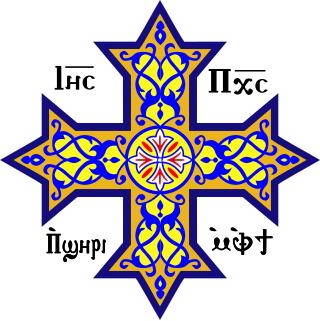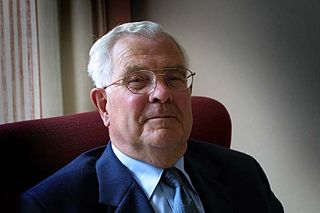
Codex Glazier, designated by siglum copG67, is a Coptic uncial manuscript of the New Testament on parchment. It is dated palaeographically to the 4th or 5th century. Textually it is very close to Greek Codex Bezae.

Codex Glazier, designated by siglum copG67, is a Coptic uncial manuscript of the New Testament on parchment. It is dated palaeographically to the 4th or 5th century. Textually it is very close to Greek Codex Bezae.

It contains the text of the Acts of the Apostles 1:1–15:3. The manuscript ends with Acts 15:3 on folio 155 recto while the following page verso has been left blank. The manuscript has some illuminations; at the end of the manuscript, on an additional leaf, it has a picture with a great crux ansata (cross with handle), a motif appearing in Coptic textiles and stone sculptures. The picture is in the colours yellow, red, and brown. [1]
The size of the pages is 12.1 by 10.4 cm. [2] The text is written in one column per page, in 16 lines per page, with wide margins. It has diaereses; the text is divided according to the chapters, whose numbers are given at the left margin. The pages are numbered.
It is written in Middle-Egyptian dialect of Coptic language. Although the manuscript contains only the first half of Acts, its non-fragmentary character is of special significance for the study of the Western text. [3]
The nomina sacra are written in contracted forms.
The text of the codex is a representative of the Western text-type, very close to the Codex Bezae. Currently, it is the main manuscript that supports the text of the Codex Bezae in the Acts. It is also only one Coptic manuscript with stricte Western text. [4]
Acts 2:30 αυτου] + κατα σαρκα αναστησαι τον Χριστον και (according to the flesh to raise up the Christ, and)
Acts 2:47 ημεραν] + εν τη εκκλησια (in the church)
Acts 4:24 ακουσαντες] και επιγνοντες την του θεου ενεργειαν;
Acts 5:18 δημοσια] και επορευθη εις εκαστος εις τα ιδια;
Acts 11:2 it contains the long Western variant, contained by D and d only, "who also met them [the brethren] and reported to them the grace of God". The last part of it is supported by similar reading of G67 "and spoke to them of the mercy of God."
Acts 13:44 according to D and d "and when he had made a long discourse about the Lord", G67 has: "But Paul spoke lengthily in the discourse concerning the Lord Jesus."
Acts 6:1 men] angel
Acts 7:46 Bezae reads οικω, G67 supports reading θεω;
Acts 8:37 and 9:5b–6a are included.
Acts 12:25 Bezae reads Σαυλος] G67 supports reading ος επεκληθη Παυλος (who was called Paul))
Acts 14:20 Only h and G67, in the report that the disciples gathered around Paul after he was stoned and cast out of the city.
The manuscript is dated to the late 4th or early 5th century. [1]
Before 1963 it was part of the private collection of the manuscripts of William S. Glazier, a banker. [5]
In 1983, it was given with the Glazier Collection to the Pierpont Morgan Library. Charles Ryskamp, director of the Morgan Library, described the Glazier Collection as an "important addition to the Morgan Library's".[ citation needed ] Currently, the book is housed in Berlin's Altes Museum.
Theodore C. Petersen published in 1964 a selection of readings in English translation. He planned to provide a critical edition of the codex, but died in 1966. [6]
The manuscript was examined by Petersen, Haenchen, Weigandt, Bober, Epp, and Schenke. Eldon Jay Epp found several unique readings of the codex. The text of the codex was edited by Schenke in 1991. [7]
The readings of the codex have been incorporated into the apparatus of Nestle-Aland 26th edition of Novum Testamentum Graece .
Before the discovery of the Codex Glazier, a number of readings of Codex Bezae had support only of later, mixed Western witnesses and no pure witnesses. In such cases always was difficult to decide whether the reading is to be taken as Western or not. The evidence of Codex Glazier allows to separate old Western readings from late reading. It allows to decide with greater assurance.
Codex Bezae has a lacuna in 8:29–10:14. The Old Latin Codex Floriacensis (designated by h), is also lacking in this section up to 9:24a, and after 9:24a. Codex Glazier is an important witness for reconstruction the Western text for this portion. At least 21 reading of Glazier of this portion may represent the Western text. [8]
The manuscript is also important as a witness of the Coptic language, because it is one of few manuscripts that are written in the dialect of Coptic used in Middle Egypt.

The Codex Vaticanus, designated by siglum B or 03, δ 1, is a Christian manuscript of a Greek Bible, containing the majority of the Greek Old Testament and the majority of the Greek New Testament. It is one of the four great uncial codices. Along with Codex Alexandrinus and Codex Sinaiticus, it is one of the earliest and most complete manuscripts of the Bible. Using the study of comparative writing styles (palaeography), it has been dated to the 4th century.
In textual criticism of the New Testament, the Alexandrian text-type is one of the main text types. It is the text type favored by the majority of modern textual critics and it is the basis for most modern Bible translations. Over 5,800 New Testament manuscripts have been classified into four groups by text type. Besides the Alexandrian, the other types are the Western, Caesarean, and Byzantine. Compared to these later text types, Alexandrian readings tend to be abrupt, use fewer words, show greater variation among the Synoptic Gospels, and have readings that are considered difficult. That is to say, later scribes tended to polish scripture and improve its literary style. Glosses would occasionally be added as verses during the process of copying a Bible by hand. From the ninth century onward, most surviving manuscripts are of the Byzantine type.
In textual criticism of the New Testament, the Western text-type is one of the main text types. It is the predominant form of the New Testament text witnessed in the Old Latin and Syriac translations from the Greek, and also in quotations from certain 2nd and 3rd-century Christian writers, including Cyprian, Tertullian and Irenaeus. The Western text had many characteristic features, which appeared in text of the Gospels, Book of Acts, and in Pauline epistles. The Catholic epistles and the Book of Revelation probably did not have a Western form of text. It was named "Western" by Semmler (1725–1791), having originated in early centers of Christianity in the Western Roman Empire.

Textus Receptus refers to the succession of printed Greek New Testament texts starting with Erasmus' Novum Instrumentum omne (1516) and including the editions of Stephanus, Beza, Elzevir, Colinaeus and Scrivener. Additionally, although not being derived from the work of Erasmus, some such as the Trinitarian Bible Society also associate the Complutensian Polyglot with the Textus receptus tradition.

The Codex Bezae Cantabrigiensis, designated by siglum Dea or 05, δ 5, is a bi-lingual Greek and Latin manuscript of the New Testament written in an uncial hand on parchment. It contains most of the four Gospels and Acts, with a small fragment of 3 John. Using the study of comparative writing styles (palaeography), it is currently dated to the 5th century.
The Berlin Codex, given the accession number Papyrus Berolinensis 8502, is a Coptic manuscript from the 5th century CE, unearthed in Akhmim, Egypt. In Cairo, in January 1896, Carl Reinhardt bought the codex, which had been recently discovered, wrapped in feathers, in a niche in a wall at a Christian burial site. It was a papyrus bound book, dating to early 5th century that was written in Sahidic dialect of Coptic, which was in common use in Egypt during that time.

Ernst Adolf Alfred Oskar Adalbert von Dobschütz was a German theologian, textual critic, author of numerous books and professor at the University of Halle, the University of Breslau, and the University of Strasbourg. He also lectured in the United States and Sweden.

The New Testament in the Original Greek is a Greek-language version of the New Testament published in 1881. It is also known as the Westcott and Hort text, after its editors Brooke Foss Westcott (1825–1901) and Fenton John Anthony Hort (1828–1892). Textual scholars use the abbreviations "WH" or "WHNU". It is a critical text, compiled from some of the oldest New Testament fragments and texts that had been discovered at the time.

There have been many Coptic versions of the Bible, including some of the earliest translations into any language. Several different versions were made in the ancient world, with different editions of the Old and New Testament in five of the dialects of Coptic: Bohairic (northern), Fayyumic, Sahidic (southern), Akhmimic and Mesokemic (middle). Biblical books were translated from the Alexandrian Greek version.

Papyrus 49 (Gregory-Aland), designated by 𝔓49, is an early copy of the New Testament in Greek. It is a papyrus manuscript of the Epistle to the Ephesians, surviving in a fragmentary condition. The manuscript has been palaeographically assigned to the 3rd century. It was probably a part of the same manuscript as Papyrus 65. It came from Egypt and was purchased for the Yale University Library. Textually it is close to the Codex Sinaiticus and Codex Vaticanus. The text of the manuscript has been published several times.
Uncial 0164, ε 022 (Soden), is a Greek-Coptic bilingual uncial manuscript of the New Testament, dated paleographically to the 6th century.
Minuscule 462, α 359, is a Greek minuscule manuscript of the New Testament, on a paper. Palaeographically it has been assigned to the 13th century. Formerly it was labelled by 101a and 116p. It was adapted for liturgical use.
Minuscule 464, α 165, is a Greek minuscule manuscript of the New Testament, on parchment. Palaeographically it has been assigned to the 11th century. Formerly it was labelled by 106a and 122p. Minuscule 464 has been identified as the same manuscript as Minuscule 252.
Minuscule 614, α 364, is a Greek minuscule manuscript of the New Testament, on parchment. Palaeographically it has been assigned to the 13th century. The manuscript is lacunose. Tischendorf labelled it by 137a and 176p.
The Codex Floriacensis, designated by h in traditional system or by 55 in the Beuron system, is a 6th-century Latin manuscript of the New Testament. The text, written on vellum, is a palimpsest. Another name of the manuscript is Fleury Palimpsest or Palimpsestus Floriacensis. It is one of the eight Old-Latin manuscripts with text of Apocalypse.

Albertus Frederik Johannes Klijn was a Dutch scholar of the New Testament and early Judaism and Christianity at the Rijksuniversiteit Groningen. He was best known for his introductory work on the New Testament, and then later for his publications on early Christian apocryphal literature.
Carl Schmidt was a German Coptologist. He made editions of various Coptic texts, and was active in Egypt in purchasing papyri for German universities. He also assisted Sir Chester Beatty in his papyri purchases.
Minuscule 891, Θε427, is a 14th-century Greek minuscule manuscript of the New Testament on paper, with a commentary. It has not survived in complete condition.
Hans-Martin Schenke was a German Protestant theologian, New Testament scholar, and Coptologist known for his pioneering studies on Gnosticism and Coptic manuscripts.